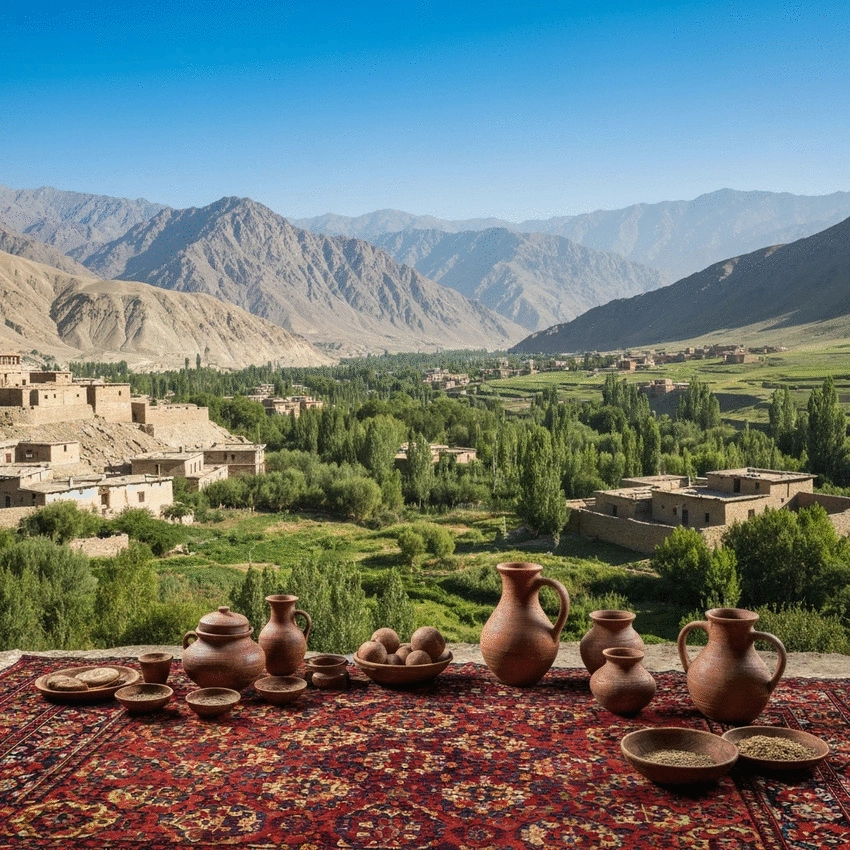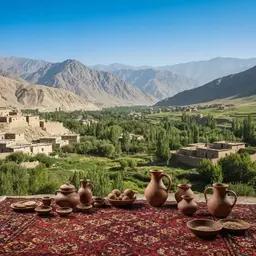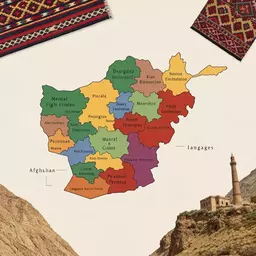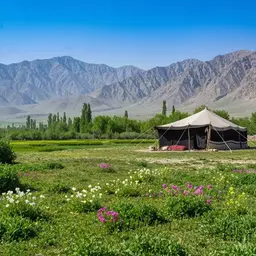Geography's Role in Afghan Culture
By Khalid Rahimi / Nov 19
In the intricate tapestry of Afghanistan, geography plays a pivotal role in shaping cultural identities. As you navigate through its diverse landscapes, consider the lasting impact that the Himalayas, deserts, and fertile valleys have on the lives of its people.
The visual below illustrates how Afghanistan's diverse geography—mountains, deserts, and fertile valleys—shapes its climate zones, ethnic distribution, and cultural practices, creating a rich tapestry of traditions and identities.
Shapes settlement patterns, cultural practices, and resource management.
Influences agriculture, survival strategies, and daily life.
Topography defines migration, social dynamics, and cultural exchanges.
Local resources and history dictate daily life, celebrations, and traditions.
Afghanistan is a land of stunning geographical diversity, where mountains, deserts, and fertile valleys converge to create a unique landscape. This varied terrain significantly shapes settlement patterns and cultural practices across the nation. For instance, the imposing Hindu Kush mountains not only serve as natural barriers but also influence the lifestyle of those who inhabit the regions surrounding them. As we dive deeper into Afghanistan's geography, we'll uncover how these elements intertwine with its rich cultural fabric.
Afghanistan's terrain is a tapestry of contrasts, featuring majestic mountains, vast deserts, and thriving valleys. The Hindu Kush stands as a formidable range, impacting climate and accessibility, while the arid deserts to the south challenge agricultural practices. In contrast, the fertile river valleys offer rich soil and a hospitable environment, fostering agricultural development and vibrant communities. The "revenge of geography" in Afghanistan emphasizes how these physical features have historically shaped its geopolitical landscape and cultural identity.
Understanding these geographical dimensions is essential; they not only shape where people live but also affect how they interact with their surroundings and each other. The interplay of these diverse environments creates a mosaic of cultures, reflecting the adaptability of the Afghan people.
The climate of Afghanistan varies significantly, from the chilly mountainous regions to the hot, dry deserts. This diversity affects agricultural practices and cultural traditions across the provinces. For instance, the milder climates of the northern valleys allow for varied crop cultivation, while the harsher conditions in the southern deserts necessitate unique survival strategies. Research on Kabul's geography highlights how urban centers also adapt to these climatic differences.
As I’ve explored these regions through my work at Afghanistan Map, it has become clear that climate is more than just weather—it's a fundamental aspect of Afghan identity, informing everything from daily meals to the very rhythms of life in these communities.
One fascinating aspect of Afghanistan is how its topography affects the distribution of major ethnic groups, such as the Pashtuns, Tajiks, Hazaras, and Uzbeks. The rugged mountains and vast deserts create natural divisions that have historically influenced migration patterns and cultural exchanges. Understanding these distributions is key to grasping the social dynamics of the country. A journal article on the cultural geography of Afghanistan further elucidates these complex relationships.
In my travels across Afghanistan, I’ve seen how these groups not only coexist but also contribute to a rich cultural tapestry that is both diverse and interconnected. Recognizing their geographical contexts enhances our appreciation of Afghanistan’s cultural complexity.
When exploring Afghanistan, consider engaging with local communities to gain firsthand insights into how geography shapes their daily lives. Participate in traditional farming practices or local festivals to experience the rich cultural tapestry that geography influences. Such interactions not only enhance your understanding but also foster deeper connections with the people and their heritage.
As we reflect on the intricate connection between Afghanistan's geography and its cultural practices, it's clear that the varied landscapes have profoundly shaped the traditions and identities of its provinces. Each region carries the imprints of its natural environment—mountains, valleys, and deserts—imbuing the local cultures with unique traits. For instance, the rugged terrains of the Hindu Kush foster resilience and adaptability, while the fertile river valleys inspire agricultural abundance and communal festivities.
Moreover, the diverse climates across Afghanistan have led to distinct cultural expressions. From the vibrant colors of Herat's artistic heritage to the serene sounds of music in the valleys, each aspect of culture reflects the geographical canvas it emerges from. This complex interplay continues to influence how communities interact, celebrate, and uphold their traditions.
Geography's influence on cultural practices is not merely historical; it remains a dynamic force today. From the bustling markets of Kabul to the tranquil villages hidden within the mountains, the essence of the land informs everyday life. Here are some key areas where geography and culture intersect:
These elements highlight how geography remains a constant companion in shaping cultural identities, fostering a deeper connection between people and their environment.
Local festivals and folklore serve as vital expressions of cultural heritage in Afghanistan. They not only celebrate the unique traits of each province but also encapsulate the shared history and traditions of the Afghan people. Here are some notable festivals and their geographical significance:
These festivals not only preserve cultural practices but also serve as a platform for community bonding, where stories and traditions are shared across generations. Such gatherings are essential for maintaining the colorful tapestry of Afghan culture amidst the changing landscape.
To truly capture the essence of cultural practices shaped by geography, we must listen to the voices of the people. Engaging with local communities allows us to gain insights into their experiences and traditions. At Afghanistan Map, we emphasize the significance of these perspectives, as they provide an authentic view of how geography influences daily life. Here are some ways to engage with local voices:
By including local voices in the conversation, we enrich our understanding of Afghanistan's diverse cultural landscape, ensuring that these stories are preserved and celebrated for future generations.
As we conclude this exploration of the interplay between geography and culture in Afghanistan, I invite you to engage further with the topic. Explore personal stories, delve into local traditions, and embrace the evolving cultural landscape that geography continues to shape. Your journey into this remarkable country can unveil the deep connections that exist between its stunning landscapes and vibrant cultures. Let's keep the conversation alive—your insights and experiences matter!
Here is a quick recap of the important points discussed in the article:

 Geography's Role in Afghan Culture
In the intricate tapestry of Afghanistan, geography plays a pivotal role in shaping cultural identit
Geography's Role in Afghan Culture
In the intricate tapestry of Afghanistan, geography plays a pivotal role in shaping cultural identit
 Understanding Afghanistan’s Provincial Demographics
Engaging with the intricate demographics of Afghanistan reveals how deeply culture and identity shap
Understanding Afghanistan’s Provincial Demographics
Engaging with the intricate demographics of Afghanistan reveals how deeply culture and identity shap
 Visiting Afghanistan: Seasonal Travel Tips
When planning your journey to Afghanistan, understanding the climate and timing of your visit is cru
Visiting Afghanistan: Seasonal Travel Tips
When planning your journey to Afghanistan, understanding the climate and timing of your visit is cru